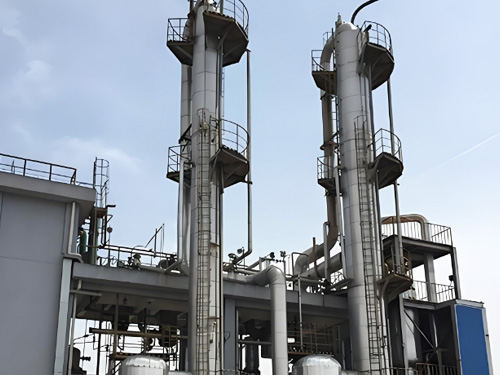
Refining distillation equipment is essential in the petrochemical industry. It plays a crucial role in the refining of crude oil by separating and refining various petroleum products. Understanding the working principle and process flow of refining distillation equipment can help optimize production processes and improve product quality. This article will explain the working principle and process flow in detail to give enterprises a competitive edge.

I. Working Principle of Refining Distillation Equipment
The basic principle of refining distillation equipment involves heating and cooling to separate crude oil into different components. The process includes the following steps:
1.Heating the Crude Oil
Crude oil is heated to its boiling point using a heater. This step aims to evaporate the various components in the crude oil. The heater or furnace raises the temperature of the crude oil to the necessary level for evaporation.
2.Evaporation and Separation
The heated crude oil enters a distillation column (or fractionating tower). Inside the column, the oil vapor rises through different temperature zones. At each temperature zone, components with different boiling points condense into liquid and are separated at various levels within the column.
3.Condensation
The vapor is cooled in a condenser, turning it back into liquid. The liquids, which have different boiling points, are collected at different levels of the distillation column or separation units, resulting in various products such as light hydrocarbons, heavy hydrocarbons, and petroleum gases.
4.Product Collection
The separated liquid products are transported through pipelines to storage tanks or further processing units. These products can be used for different downstream applications, including fuels, lubricants, and chemical raw materials.
5.Tail Gas Treatment
The tail gases and uncondensed vapors from the distillation process are treated to ensure emissions meet environmental standards.
II. Process Flow of Refining Distillation Equipment
The process flow of refining distillation equipment typically involves the following key steps:
1.Crude Oil Pretreatment
Before entering the distillation unit, crude oil undergoes pretreatment, including desalting, dewatering, and filtration, to remove impurities and water, ensuring smooth distillation.
2.Heating Stage
The pretreated crude oil is heated in a furnace or heater. The temperature gradually rises until it reaches the evaporation condition. The furnace usually uses fuel to maintain a stable heating temperature.
3.Distillation Column Operation
The heated crude oil is fed into the distillation column. Inside the column, the oil vapor passes through different trays or packing, cooling and separating progressively. The column has multiple levels or trays, each corresponding to different temperature zones to separate various product components.
4.Condensation and Separation
The vapor is cooled in the condenser, and the liquid is collected at different levels of the distillation column or separation units. The cooling system typically uses cooling water or refrigerants to ensure vapor condensation.
5.Product Storage and Processing
The separated liquid products are transported to storage tanks or further processing units. Storage tanks often have heating and cooling devices to maintain product stability and quality.
6.Tail Gas Treatment
Tail gases generated during distillation are processed through treatment systems. These systems typically include desulfurization, denitrification, and waste gas recovery units to ensure emissions meet environmental standards.
III. Technical Advantages of Refining Distillation Equipment
1.High Efficiency
Refining distillation equipment efficiently separates different components from crude oil, enhancing production efficiency and product quality. Advanced distillation technology allows for finer separation, meeting various production needs.
2.Energy Efficiency and Environmental Friendliness
Modern refining distillation equipment often includes energy-saving and environmental technologies, such as efficient heaters and cooling systems, reducing energy consumption and pollution.
3.Stability and Reliability
Optimized equipment design ensures high stability and reliability. Well-designed processes and automated control systems support long-term stable operation.
4.Ease of Operation
Modern refining distillation equipment features advanced control systems that simplify operation, allowing real-time monitoring and adjustment of equipment, enhancing efficiency and safety.
5.Wide Applicability
Refining distillation equipment can handle various types of crude oil, including light, heavy, and complex mixed feeds, making it versatile in application.
IV. Conclusion
Refining distillation equipment plays a vital role in the petrochemical industry by significantly improving oil quality and production efficiency. Understanding its working principle and process flow can help businesses optimize their production processes and enhance market competitiveness. We hope this article provides valuable insights for selecting and using refining distillation equipment, aiding companies in achieving success in the petrochemical sector.



